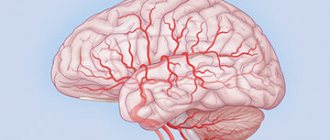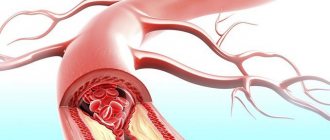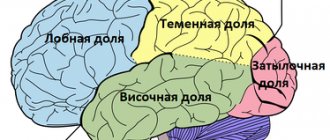X-ray: Changes in pulmonary pattern
Medicine / Diagnostics / Diagnostics (article)
X-ray of the lungs Normally, the X-ray picture of the pulmonary pattern is an image of predominantly blood vessels that branch in the air-bearing tissues of the lungs. in the normal state, the caliber (diameter) of vascular shadows decreases in the direction from the roots to the periphery of the pulmonary field, the contours of the vessels are clear, even, with regular branches.
A perpendicular or oblique shadow of the vessel in relation to the film looks like an oval or circle.
In the hilar regions of the lungs, near large vascular shadows, bronchi can be identified in a transverse or longitudinal section, respectively, in the form of a ring-shaped shadow or two thin parallel strips. On an x-ray, the thickness of the walls of the bronchi normally does not exceed 1 mm.
Pathological changes in the pulmonary pattern can be caused by many conditions and diseases - inflammation, circulatory disorders, pneumosclerosis, neoplastic conditions.
Strengthening the pulmonary pattern
The X-ray pattern of increased pulmonary pattern is characterized by an increase in the number of elements of the pulmonary pattern per unit area of the pulmonary field.
The “unit” of pulmonary field area is considered to be a diamond-shaped area, which is limited by the intersecting shadows of adjacent anterior and posterior segments of the ribs. At the same time, the number of “normal” vascular elements of the pulmonary pattern and their divisions, their diameter, is noted.
Strengthening the pulmonary pattern can cause the formation of “new” pattern elements, caused by pathological changes in the interstitial tissue of the lungs (connective tissue stroma of the lungs) - these are, as a rule, linear and reticular (mesh) shadows.
That is, the strengthening of the pulmonary pattern can occur due to the vascular or interstitial component .
The interstitial component of the pulmonary pattern includes Kerley lines (additional linear shadows, 1-2 mm wide, with a certain location of the lungs), which arise when the interlobar septa thicken during various pathological processes - inflammation (pneumonia, viral infection, etc.), edema in heart failure, neoplastic processes (for example, with lymphogenous carcinomatosis).
Kerley lines can be of several types (Figure 1):
- Kerley lines type A – are defined radially from the roots of the lungs towards the upper lobes; length – up to 5 cm.
- Kerley lines type B – are determined in the lower outer parts of the pulmonary fields, above the costophrenic sinuses, subpleural and directed perpendicular to the pleura; length – up to 2 cm.
- Kerley lines type C - are defined as “polygons” or “grids” in the hilar regions and lower lobes of the lungs.
Figure 1. Curley lines of different types (schematic representation)
Thickening of the pulmonary pattern
When the pulmonary pattern thickens, the x-ray shows a convergence of the vascular elements with each other. In fact, thickening of the pulmonary pattern is considered a type of strengthening of the pulmonary pattern.
This phenomenon occurs when the volume of the lung or part of it (segment, lobe) decreases.
Also, thickening of the pulmonary pattern can occur with hypoventilation, effusion in the pleural cavity, or compression of the lung by a high dome of the diaphragm.
Deformation of the pulmonary pattern
Deformation of the pulmonary pattern is a violation of the normal x-ray picture with the correct branching of vascular shadows, characterized by a violation of the rectilinear course of the vascular shadows, a sharp change in the course of their direction, due to which the image of the vessel shadow can abruptly “break off”.
The contours of the vessels become uneven. The pattern of deformation of the pulmonary pattern is often found in pneumosclerosis (Figure 2).
Deformation of the pulmonary pattern can also be caused by the formation of reticular (mesh) shadows that occur as a result of pathological changes in the interstitial tissue of the lungs.
Pneumosclerosis
Figure 2. Pneumosclerosis. Fragment of a radiograph of the left pulmonary field in a direct projection. The image shows an increase in the interstitial component of the pulmonary pattern, due to the formation of reticular (mesh) shadows, forming a fine-mesh pattern. The changes are more pronounced in the root zone, and deformation of the vascular pattern is also noted
Depletion of pulmonary pattern
Depletion of the pulmonary pattern is characterized by a decrease in the number of elements of the pulmonary pattern per unit area of the pulmonary field, while the radiograph shows an increase in the transparency of the pulmonary field.
The pattern of depletion of the pulmonary pattern is due to the destruction of lung tissue in areas of emphysema and bullae (thin-walled lung cavities).
Local (local) depletion of the pulmonary pattern is rare and may be an early sign of pulmonary embolism.
Pathologies with changes in the pulmonary pattern
Below are some of the most important diseases and conditions in which changes in the pulmonary pattern occur.
Unilateral enhancement of the vascular pattern
Unilateral strengthening of the vascular pattern throughout the entire pulmonary field can be determined by compensatory changes in the absence of a second lung, as well as by strong compression of the opposite lung by air in the pleural cavity or pleural effusion.
If a local (within several segments) increase in the vascular pulmonary pattern is detected, this may be a sign of the development of an inflammatory process.
Also, local enhancement of the pulmonary pattern can occur with heterogeneous inflammatory infiltration (see article “Radiography: Pneumonia”, Figure 6, 7).
Circulatory disorders in the lungs
Pulmonary circulatory disorders are characterized by diffuse bilateral changes in the pulmonary pattern due to impaired myocardial contractility, resulting in the development of congestive heart failure (the radiograph first shows venous congestion in the pulmonary circulation, and if it progresses, signs of interstitial pulmonary edema ). Venous congestion on a radiograph is defined as an enhancement of the pattern due to the vascular component. In a normal state, the caliber of the vessels of the lower lobes of the lungs is greater than the caliber of the vessels of the upper lobes, which is due to the action of gravity. Venous stagnation first causes a so-called redistribution of blood flow in favor of the upper lobes of the lung, which on an x-ray is determined first by the same caliber of the vessels of the upper and lower lobes, and then by an increase in the caliber of the vessels of the upper lobes of the lungs in relation to the caliber of the vessels of the lower lobes. Also about, dilated superior pulmonary veins in the hilar regions of the upper lobes. As the pathology progresses, dilation of the veins is noted in the lower parts of the pulmonary fields - more vascular shadows with a horizontal course are detected. Note that the veins in the lower parts of the pulmonary fields, unlike the arteries, have a more horizontal course. In addition, the number of dilated vessels visible in orthoprojection can be determined.
In the case of the development of interstitial pulmonary edema, in addition to signs of venous congestion in the pulmonary circulation, Kerley lines are noted, which belong to the interstitial component of the pulmonary pattern and represent thickened and edematous interlobular septa.
Kerley lines of type B are often found, less often - types A and C.
Note that in heart failure, Kerley lines are combined with increased vascular pattern (due to venous stagnation in the pulmonary circulation), an increase in the size of the cardiac shadow (not in all cases) and with pleural effusion (often).
Lymphogenic carcinomatosis
Lymphogenic carcinomatosis is a type of metastatic lesion of the lungs, characterized by an increase in the interstitial component of the pattern with its deformation - reticular shadows are determined, mainly in the lower and hilar parts of the pulmonary fields.
Kerley lines type B can also be detected. Against the background of these signs, focal shadows can be visualized.
With lymphogenous carcinomatosis, in contrast to cardiogenic changes in the pulmonary pattern, the strengthening of the vascular component of the pattern is not determined; asymmetric unilateral changes may be observed.
Enlarged, structureless roots with uneven, “lumpy” contours are often observed, which is caused by enlarged lymph nodes. As a rule, these changes are confirmed by relevant medical history (with lymphogenous carcinomatosis, the patient has a dry cough, shortness of breath, severe condition).
Pneumosclerosis
Pneumosclerosis develops as a result of the inflammatory process and is determined on a radiograph as an increase in the interstitial component of the pattern, its deformation and the formation of reticular shadows (Figure 2).
Diffuse pneumosclerosis develops with chronic bronchitis, and occupational dust lung disease can also cause the development of pathology.
Fibrous cords in the lungs cause the formation of stripe-like, linear shadows on the radiograph (Figure 3).
These cords are often located in the direction from the peripheral parts of the lung to the root, which is due to peribronchovascular fibrosis.
Note that the term “pneumosclerosis” is usually used for changes in the pulmonary pattern, and the term “fibrosis” refers to more “gross” changes in the form of massive cords.
Fibrous changes in the lungs
Figure 3. Fibrous changes in the middle lobe of the right lung.
A – radiograph in direct projection: pleural layers and fibrous cords are visualized in the middle lobe of the right lung (see arrows); the right cardiophrenic sinus is obliterated by adhesions. B – radiograph in the right lateral projection: a commissure is identified in the projection of the cardiophrenic sinus (see arrow)
Fibrous changes in the lungs are often combined with deposits on the pleura (due to fibrous thickenings). With gross fibrotic changes in the upper lobes, with a decrease in their volume, the roots of the lungs (displacement) upward (Figure 4).
Fibrous changes in the lungs
Figure 4. Fibrous changes in the upper lobe of the right lung.
A – radiograph in direct projection; B – enlarged fragment of radiograph A (upper lobe on the right): in the upper lobe of the right lung, fibrous strands are identified, running from the peripheral parts to the root of the lung; deformation of the pulmonary pattern and pleural layers are also noted. The root of the right lung is “pulled up” due to a decrease in the volume of the upper lobe of the lung
In some cases, small “dense” (high-intensity) focal shadows with a clear contour may appear in the lungs, which are caused by pneumosclerosis.
Such fibrous focal changes can form when the tuberculous process resolves (in this case, they are often located in the upper parts of the lung fields in combination with apical pleural layers and calcifications).
Sometimes areas of fibrosis can alternate with areas of emphysema (in areas of emphysema, a depleted pulmonary pattern is noted).
Note that an important sign of pneumosclerosis and fibrosis is the absence of dynamics of radiological changes over a long period of time against the background of a satisfactory condition of the patient.
Pneumonia with damage to the interstitial tissue of the lungs. Viral infections
In case of viral infectious diseases and pneumonia with damage to the interstitial tissue of the lungs, the x-ray may reveal an increase in the interstitial component of the pulmonary pattern, characterized by the formation of linear shadows (see the article “Radiography: Septic pneumonia”, Figure 6) and reticular changes in the hilar regions of the lungs.
Also, changes in the interstitial component of the pulmonary pattern in the form of reticular shadows can be observed in many pathologies accompanied by damage to the interstitial tissue of the lung (for example, idiopathic interstitial pneumonia, hypersensitivity pneumonitis, drug-induced lung injury, sarcoidosis, pneumococcosis, etc.).
Source: https://medqueen.com/medicina/diagnostika/diagnostika-statya/2065-rentgenografiya-izmeneniya-legochnogo-risunka.html
Pulmonary pneumosclerosis: signs, treatment, life expectancy – About Lungs
Pulmonology9 diseases leading to the development of pneumosclerosis, and 3 possible complications of the pathology
Pneumosclerosis means a pathological process in which the lung parenchyma is replaced with useless connective tissue fibers. Thus, part of the organ ceases to perform its proper functions, and the respiratory surface area noticeably decreases. The affected pulmonary alveoli are not able to fill with air and the process of gas exchange no longer occurs in them.
It is a fairly common pathology, more often diagnosed in older people, but can occur in absolutely any age group.
Pneumosclerosis is an irreversible condition that will accompany a person for the rest of his life.
What are the different types?
There are several classifications and according to the location of pulmonary pneumosclerosis there are:
- apical - the pathological process is located at the apex of the organ;
- basal - the proliferation of connective tissue fibers is located at the roots, which are represented by the main bronchus, pulmonary artery and vein;
- basal - characterized by the presence of non-functioning tissue at the base of the lungs.
According to the degree of prevalence, they are separately distinguished:
- pneumofibrosis , in which the connective and pulmonary tissues are located simultaneously;
- pneumosclerosis - pulmonary tissue is completely absent;
- Pulmonary cirrhosis is the most severe stage, requiring surgical intervention and accompanied, in addition, by compaction of the pleural membrane, nerves and blood vessels.
Also distinguished:
- focal form , in which the sclerotic process is detected over a short area;
- diffuse , capable of affecting an entire lobe or entire organ.
Separately, we can highlight such a concept as pleuropneumofibrosis , which occurs in response to an inflammatory process, can have unilateral or bilateral localization and is characterized by the presence of adhesions between the pleura and the lungs. It often occurs with an unpleasant pain syndrome, often mistaken for neurological problems, for example, osteochondrosis of the thoracic spine.
In older people, pneumosclerosis is often combined with aortosclerosis - the growth of connective tissue in the main arterial vessel leaving the heart.
The most common localization of pneumosclerosis is the ventral (posterior) segments of the lungs.
9 diseases leading to pneumosclerosis
Pneumosclerosis is not an independent nosological entity; it is only a consequence of various lung diseases.
- Pneumonia is an acute infectious (viral, fungal, bacterial) inflammation of the lung tissue.
- Acute and chronic bronchitis is an inflammatory process localized in the bronchial mucosa.
- Fibrosing alveolitis (Hamman-Rich syndrome) is a disease of unknown origin, characterized by extensive damage to lung tissue and progressive respiratory failure.
- Pneumoconiosis is a group of occupational diseases that arise from prolonged inhalation of industrial dust.
- Tuberculosis is a highly common disease caused by Koch's bacillus. In more than 80% of cases, pneumosclerosis is located in the upper parts of the lungs.
- Sarcoidosis (Beck's disease) is a pathology with an unstudied etiology, in which specific granuloma formations form in the lung tissue.
- Idiopathic pneumosclerosis - for an unknown reason, the lung tissue begins to be replaced by connective tissue.
- Lung abscess is the presence of a cavity filled with pus in the lung tissue.
- Echinococcosis is manifested by the formation of a round formation (cyst) filled with parasites in the organ.
The most common cause of pneumosclerosis is pneumonia.
How does pneumosclerosis manifest?
The focal form of pneumosclerosis has no manifestations. In diffuse cases, patients experience the following symptoms:
- severe shortness of breath;
- severe weakness, increased fatigue due to oxygen deficiency;
- cyanosis of the skin (cyanosis), especially noticeable in the most remote areas of the body;
- dry cough;
- changes in the chest - it becomes barrel-shaped, the intercostal spaces are retracted, the subclavian fossae deepen;
- fingers take the shape of drumsticks (Hippocrates' fingers), and nails - watch glasses;
- possible weight loss;
- increased heart rate due to the fact that the heart is trying to compensate for oxygen deprivation;
- swelling of the neck veins - with severe pneumosclerosis.
The more areas of the lungs are replaced by connective tissue fibers, the stronger the manifestations will be.
How is pneumosclerosis diagnosed?
The identification of this pathological condition is carried out by general practitioners, pulmonologists, and phthisiatricians. At the first stage:
- percussion or tapping , which reveals dullness of percussion sound, but only with significant amounts of pneumosclerosis;
- Auscultation - with the help of a phonendoscope, tightening of breathing and, in some cases, pneumosclerotic rales of a crackling nature are heard.
To accurately establish a diagnosis, the following instrumental studies are necessary:
- radiography , which can reveal darkening of the pulmonary fields of various diameters, changes in blood vessels (pulmonary pattern), a decrease in the size of the organ and a shift of the mediastinal shadow towards the lesion;
- spirography . With its help, respiratory function is examined. Characteristically, there is a decrease in the vital capacity of the lungs and the volume of forced expiration in 1 second. It is a very simple and inexpensive method, but the causes of the pathological condition cannot be determined with its help;
- Bronchoscopy is one of the modern trends, carried out using special medical equipment - a bronchoscope equipped with a camera and, in some cases, even allowing visualization of the focus of connective tissue proliferation. Also, with its help, take a fragment of the bronchus and examine it under a microscope, which can make it possible to establish the exact cause of this condition;
- computer or magnetic resonance imaging , which allows identifying changes in lung tissue at the earliest stages.
The examination program may also include:
- general and biochemical blood test;
- electrocardiography;
- ultrasound examination of the heart;
- bacteriological and general sputum analysis.
To confirm the diagnosis of pneumosclerosis, in most cases, a single X-ray of the lungs is sufficient.
Approaches to the treatment of pneumosclerosis
Since pneumosclerosis is an irreversible condition, there are currently no medications for its treatment.
The goals of therapy are:
- eliminating the root cause of this condition;
- combating respiratory failure;
- prevention of complications.
If the cause of the development of pneumosclerosis is not eliminated, then you should not count on a good prognosis for the patient’s life.
For this purpose the following can be used:
- antibacterial agents for the treatment of inflammatory lung diseases caused by bacteria (bronchitis, pneumonia);
- cytostatics and glucocorticoids for autoimmune lesions and sarcoidosis;
- anti-tuberculosis drugs;
- surgical intervention for abscess;
- surgical treatment and antiparasitic drugs for echinococcosis.
To combat respiratory failure, the following are used:
- inhaled glucocorticoids - Fluticasone, Budesonide;
- drugs that dilate the lumen of the bronchi (bronchodilators) - Formoterol, Salmeterol, Salbutamol, Ipratropium bromide;
- glucocorticosteroids - Prednisolone, Methylprednisolone.
In approximately 20 - 25% of cases, there is no response to hormonal therapy.
How to avoid the formation of pneumosclerosis?
To prevent pneumosclerosis and its complications it is necessary:
- promptly treat diseases of the upper respiratory tract (ARI, etc.);
- protect yourself from occupational hazards by wearing special masks or respirators;
- stop smoking;
- carry out therapeutic massage (helps cleanse the bronchial tree and improve pulmonary ventilation) and limit physical activity when treating the underlying disease to minimize complications.
What are the consequences of pneumosclerosis?
Changes in the functioning of the lung tissue certainly affect the heart, which significantly worsens the general condition and prognosis for the patient’s life.
The consequences of pneumosclerosis are:
- pulmonary heart . It is characterized by an increase in its right parts, but compensatory mechanisms are temporary, since over time the enlarged heart muscle ceases to have enough oxygen, which is fraught with the development of myocardial infarction;
- chronic respiratory failure. It gradually progresses, is practically untreatable and affects the functioning of all organs and systems;
- frequent respiratory infections. Due to poor ventilation and blood circulation in the lungs, various infectious agents often develop with the development of bronchitis or pneumonia.
Conclusion
Today, there is active development of drugs that can slow down and reverse the processes of connective tissue proliferation. Perhaps in the near future, medicine will be able to completely control and cure this disease.
We have put a lot of effort into making sure you can read this article and would welcome your feedback in the form of a rating. The author will be pleased to see that you were interested in this material. Thank you!
(9
Source:
Pneumosclerosis of the lungs in the elderly: symptoms and treatment of the disease
Pneumosclerosis of the lungs in the elderly: symptoms and treatment of the disease
Pneumosclerosis is a disease that occurs as a result of the replacement of lung tissue with connective tissue.
This disease can occur in people of different ages, but most often elderly people face this problem.
Today pneumosclerosis is not a rare disease. More than half of cases of lung pathologies end in the development of this disease.
Pneumosclerosis in older people cannot be called a separate disease, since its appearance is a consequence of a complication or course of some pulmonary disease.
Causes of disease development in old age
- Pneumosclerosis in older people occurs due to impaired elasticity of the lung tissue.
- When tissue is replaced, it is much more difficult for the lungs to contract, gas exchange is disrupted and, as a result, the lungs themselves gradually become smaller and deformed due to oxygen deficiency.
- In older people, this disease is a consequence of lung diseases and natural aging of the body.
Development of pulmonary pneumosclerosis
It is known that as the body matures, it is much more difficult for the immune system to cope with various diseases and ailments, so various complications appear more often.
Pulmonary pneumosclerosis is a consequence of the course of the following lung diseases.
| Disease | Short description |
| Mycosis | This is damage to lung tissue by pathogenic fungi. The main reason for this is weakened immunity. |
| Sarcoidosis | An inflammatory disease characterized by damage to the lymphatic and mesenchymal tissues of the lungs. |
| Tuberculosis | An infectious disease caused by Koch's bacillus. |
| Bronchitis | Inflammatory process of the mucous membrane of the lungs and bronchi. |
| Exudative pleurisy | Damage to the pleura (the membrane that covers the lungs) with accumulation of effusion (fluid) in the pleural cavity. |
Pneumosclerosis of the lungs in older people can also occur due to:
- Inhalation of industrial gases.
- Carrying out chemotherapy for cancer.
- Entry into the bronchi of a foreign object.
- Smoking abuse.
Most often, this problem is faced by people who live in areas with unfavorable environmental conditions, that is, in cities with a large number of enterprises and factories that emit a lot of industrial gases and vapors into the atmosphere.
Source: https://gorclinbol.ru/kashel/pnevmoskleroz-legkih-priznaki-lechenie-prodolzhitelnost-zhizni.html
Peribronchitis
Healthy respiratory organs allow you to calmly receive the necessary amount of oxygen and exhale unnecessary carbon dioxide. Many people face various respiratory diseases.
They often suffer from a runny nose, ARVI, and laryngitis. It is not uncommon to experience bronchitis, which, when prolonged, becomes chronic.
However, if bronchitis inflames the mucous surface of the bronchi, then peribronchitis affects the outer lining.
What kind of disease is this? Everything about peribronchitis will be discussed on vospalenia.ru.
What is peribronchitis?
What is peribronchitis? This is an inflammation of the outer layer of bronchial tissue, which connects the organ to nearby parts. Often the disease develops against the background of chronic bronchitis, which is characterized by severe inflammation of the bronchial mucosa.
The types of infection are divided according to the route of penetration:
- Aerogenic – through the lumen of the bronchi;
- Lymphogenic - through lymph from the lymph nodes.
go to top
According to forms of development, they are divided into:
- Acute peribronchitis with pronounced symptoms;
- Chronic peribronchitis, which develops as a result of untreated or untreated acute peribronchitis. Characterized by periodic remissions and exacerbations.
go to top
- Compensatory – when the internal resources of the body allow one to compensate for the lack of respiratory failure. Manifests itself in cough, shortness of breath.
- Subcompensatory – the chest expands, shortness of breath occurs even in a calm state.
Respiratory failure is increasing more and more. Fatigue occurs almost instantly. - Decompensatory – when respiratory failure is so high that a person does not have the strength for active movement.
go to top
The main cause of peribronchitis of bronchial tissue is the penetration of infection, which enters through the air from the lumen of the bronchi or from other organs of the body that are inflamed and spread harmfulness through the lymph.
If left untreated, the infection can spread to nearby alveoli and tissues, causing diseases of the bronchi (for example, bronchitis or bronchiectasis) and lungs (for example, pneumonia).
Harmful substances that affect the bronchial tissue are:
- Infections from other diseases: measles, influenza, whooping cough, tuberculosis, etc.
- Chemicals inhaled through the air.
- Congestion in the lungs due to poor heart function.
go to top
Symptoms and signs
Signs and symptoms of inflammation of the bronchial tissue occur against the background of the growth of connective tissue along the bronchi and their scarring. What are these symptoms?
- Temperature rises to 39ºС;
- Deterioration in health, which occurs very sharply;
- A copious amount of purulent sputum is produced;
- Noises are heard during breathing;
- Symptoms of bronchiectasis appear, which begins to develop against the background of the underlying disease: loss of appetite, sweating, shortness of breath, cough, hemoptysis, loss of strength;
- Increased fatigue;
- The chest takes on a rounded shape.
When you cough, foul-smelling purulent sputum is released, which slightly improves the general condition. The patient seems to be getting better. Actually this is not true. Peribronchitis will not cure itself. Subsequent attacks will only indicate the development of a chronic disease, which will take longer and more seriously to treat.
go to top
Peribronchitis in children
Peribronchitis in children develops against the background of chronic bronchitis, measles, influenza, and whooping cough. Thus, infectious diseases that provoke inflammation of the bronchial tissue should be treated in a timely manner.
go to top
Peribronchitis in adults
Peribronchitis in adults occurs quite often if the patient neglects treatment of other respiratory diseases of the lower respiratory system. Harmfulness at work also affects the development of inflammation; accordingly, it is more common in men than in women.
go to top
Diagnostics
The symptoms of peribronchitis are so non-unique that they are often confused with other respiratory diseases, such as bronchitis or alveolitis. Therefore, this significantly worsens the diagnosis.
A patient seeks help to eliminate one suspected disease, but it turns out that he is suffering from another disease.
Instrumental and laboratory tests also do not provide an accurate picture, but they still allow us to determine the source of inflammation:
- A blood test is done;
- A bacteriological analysis of sputum, which is expelled with a cough, is carried out;
- X-ray, CT and MRI of the respiratory tract are performed;
- Allergic reactions to various substances are checked.
go to top
Treatment
Treatment of peribronchitis begins with eliminating the underlying disease, which led to the development of inflammation of the bronchial tissue. Often this disease is chronic bronchitis. Treatment of the same area gives high-quality results. The set of procedures is almost the same.
go to top
How to treat peribronchitis?
Medicines:
- Antibiotics, antiviral or antifungal drugs, depending on the cause.
- Antiallergic drugs if the cause is an allergy.
- Iodine preparations, fibrolysin and absorbable agents.
- Diuretics to relieve swelling.
- Sulfonamides.
The diet is a diet full of carbohydrates. More warm fluid is given to help thin the sputum.
Treatment is not carried out at home, since we are often talking about two diseases at the same time - the one that provoked peribronchitis, and the inflammation of the bronchial tissue itself. Various warming procedures are carried out here (compresses, applications, heating pads, baths) that promote recovery.
go to top
Interesting Facts
The perivascular spaces are named after the two scientists. However, as often happens, the area was first discovered by another person. This was done in 1843 by Durand Fardel.
Only 10 years later, the German scientist Rudolf Virchow described in detail the structure of this area. This fact is surprising, given that a conventional microscope was used for the study.
A few years later, his French colleague clarified that this is not just a gap, but a channel inside which a cerebral vessel passes.
Kidneys as a factor of pathology
Many have heard of, and some have even encountered, such a disease as cerebral microangiopathy.
What is it? This is a pathological process that affects capillaries and small vessels, acquiring a chronic form. Blood circulation in the brain is impaired. Since oxygen and glucose are responsible for normal blood flow, a long-term lack of these substances leads to disruption of the small vessels of the brain. Kidney pathology can cause a moderate edematous syndrome, in which there will be a situation associated with the expansion of the spaces under the meninges. Sometimes this may be due to poisoning with heavy metal salts. Chronic alcohol intoxication may also be a cause.
https://www.youtube.com/watch?v=https:tv.youtube.com
Of course, all these conditions are more typical for adults. In children, the predominant causes are congenital anomalies. The cause may also be birth trauma, which disrupts the circulation of fluid in the cranial cavity.
Causes of spots on MRI of the brain
If the patient’s perivascular spaces are expanded and the volume of the brain is reduced, then doctors talk about organ atrophy. Most often this is a sign of the following diseases:
- senile dementia;
- atherosclerosis;
- Alzheimer's disease.
In these diseases, neurons die. This is accompanied by memory impairment, mental impairment, and mental disorders. Typically, such diseases occur in elderly patients.
In some cases, dilated perivascular Virchow-Robin spaces are detected in newborns. This may be a sign of serious genetic diseases accompanied by the death of neurons. How to treat such pathologies? After all, it is no longer possible to restore lost neurons. You can only slow down the process of death of nerve cells. Patients are prescribed the following drugs for symptomatic therapy:
- nootropics: Piracetam, Cavinton, Nootropil;
- sedatives: “Phenazepam”, “Phenibut”;
- antidepressants: Valdoxan, Amitriptyline.
The prognosis of such pathologies is usually unfavorable, as brain atrophy and neuronal death progress.
A series of MRI scans obtained an image of the supratentorial structures of the brain. MRI signs of volumetric and focal pathological processes in the brain substance were not revealed. The topography of the median structures is not changed. At the level of the basal ganglia and semioval centers, perivascular spaces of Virchow-Robin are identified along the penetrating vessels.
https://www.youtube.com/watch?v=https:accounts.google.comServiceLogin
The ventricular system is not dilated, the lateral ventricles are symmetrical. The fissures of the subarachnoid space are unevenly expanded along the covexital and medial surfaces of the frontal and parietal lobes. The suprasellar cistern substitutively prolapses into the cavity of the sella turcica, the height of the pituitary gland at this level is 3 mm.
Brain stem structures without signs of pathological changes. Craniovertebral relationships are not disturbed. The mucous membrane of the right maxillary sinus is significantly thickened. The nasal septum is curved to the right. On a series of MR tomograms performed in the mode of volumetric reconstruction and rotation, an image of the vessels of the circle of Willis was obtained.
MRI signs of moderately severe external replacement hydrocephalus. The emerging “empty” sella turcica. MRI signs of inflammatory changes in the right maxillary sinus, curvature of the nasal septum. No hemodynamically significant narrowings, aneurysms, or vascular malformations were detected. Aplasia? Left communicating artery.
No significant changes were identified as a result of this study. There are signs of replacement hydrocephalus, which indicates a disruption in the production or outflow of cerebrospinal fluid. This can lead to increased blood pressure and headaches. The method of treatment can be chosen by the attending physician; it depends on the patient’s age, characteristics of clinical manifestations, history of the disease and its dynamics.
In this case, it is not recommended to delay the start of treatment, since with earlier treatment the patient’s condition returns to normal faster. The developing empty sella turcica can occur without visible clinical disorders, but in some cases it occurs, accompanied by endocrine and neurological disorders.
MRI, Neurologist and neuropathologist Thank you for your answer. If you can, explain what Aplasia is? The left communicating artery and how serious it is. I often have dizziness, headaches, dark vision, sometimes I lose consciousness. Aplasia of the artery means its absence, which can lead to the symptoms that you have.
This pathology is corrected surgically. You need to personally consult with an angiosurgeon regarding additional examination and decision on the issue of surgical intervention. You can get more information on this issue in the thematic section of our website: Surgery MRI signs of formation of the left half of the main sinus, more likely meningoencephalocele.
To clarify the nature of the formation, RCT of the paranasal sinuses is recommended. Expansion of the subarachnoid convexital space. “Empty” sella turcica. According to this conclusion, there is a possibility of the formation of a meningeal hernia, and an empty sella turcica is also observed. In this regard, you need to personally consult with a neurosurgeon, as well as take a blood test for pituitary hormones and consult with an endocrinologist.
In some cases, dilated perivascular Virchow-Robin spaces are detected in newborns. This may be a sign of serious genetic diseases accompanied by the death of neurons.
How to treat such pathologies? After all, it is no longer possible to restore lost neurons. You can only slow down the process of death of nerve cells. Patients are prescribed the following drugs for symptomatic therapy:
- nootropics: Piracetam, Cavinton, Nootropil;
- sedatives: “Phenazepam”, “Phenibut”;
- antidepressants: Valdoxan, Amitriptyline.









